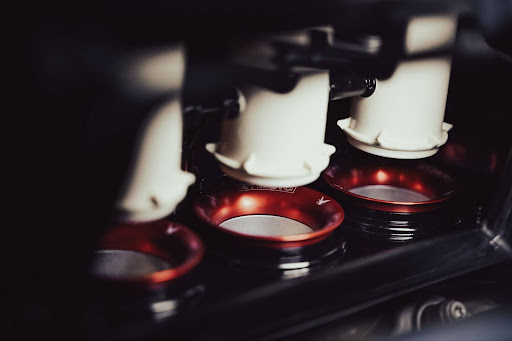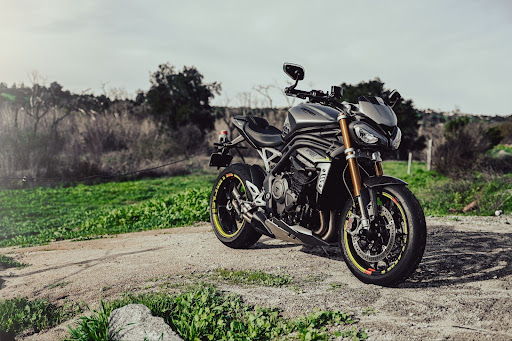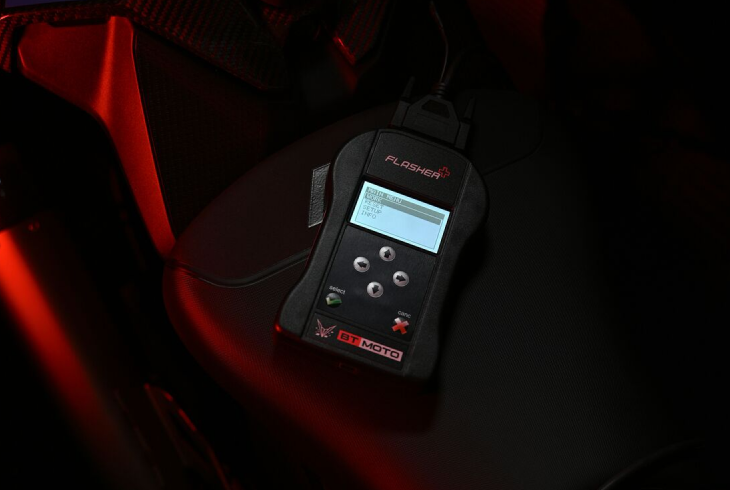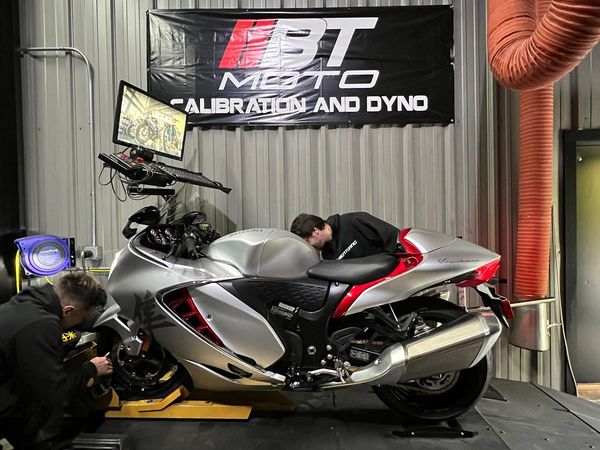
The motorcycle world is extraordinarily fascinating. It absorbs your very being, embeds its love deep within you, and gives you a "healthy addiction" that never goes away (amen to that). This feeling is beautifully encapsulated by Hollywood star Keanu Reeves (who also happens to be a motorcycle company owner and a big time enthusiast). He said, "When I don't ride a motorcycle, I go through withdrawal."
So, if you own a motorcycle, chances are you treat it like a child. You take care of it, pamper it, and can't stand the sight of it being in distress. And speaking of being in distress, do you give your motorcycle tuning the much-needed attention it truly deserves? Because if you don't, it's about time you started considering reaping the many advantages of motorcycle tuning like enhanced performance and improved fuel efficiency.
Let's shift directly into sixth gear to find out more about the world of tuning a motorcycle.
What is Motorcycle Tuning?

Motorcycle tuning (also called motorcycle ECU remapping or “flashing”) revolves around the process of using the ECU to modify the engine's parameters. In other words, it's all about adjusting elements such as power, torque, air/fuel mixture and others to optimize your bike's performance and efficiency.
You see, motorcycle manufacturers often have to set different engine's parameters to comply with global standards and restrictions. But what if you want to get more out of your bike? Well, this is where tuning allows you to “break through” the restrictions to unlock your bike's full potential. Also, it makes you feel like a kid in a candy store. Usually, a tuning file digitally uploads these modifications to your bike through specialized remapping software or dyno setup.
But is it really worth it?
Benefits of Motorcycle Tuning and Effects of the Bike's Performance

Improved Performance: You won't get the acceleration thrill and the rush of adrenaline with a sluggish motorcycle that has worn-out or restricted components. Tuning does a commendable job when it comes to enhancing the engine's volumetric efficiency. Generally speaking, it helps the engine produce a lot more power from the same displacement. And if you're wondering how much horsepower tuning can give your bike, it can vary widely—from a modest few horsepower to significant double-digit improvements.
Better Fuel Economy: Motorcycle tuning helps optimize the ECU's settings to adjust certain key parameters. In fact, you can make the combustion process within the engine more efficient by making adjustments to the fuel injection settings and the air/fuel ratio. As a result, the engine will start to run at its optimal level to deliver a smoother riding experience with more power and possibly reduced fuel consumption.
Enhanced Rideability: Tuning is one guaranteed way to ensure your bike keeps running smoothly for many years to come. It prevents your bike from running lean and delivers a far more responsive and enjoyable ride in a lot of ways. For instance, you get a sharp throttle response. There's also a smooth power delivery devoid of flat spots or abrupt power surges. And last but not least, tuning does a pretty good job of increasing torque at lower RPMs.
What Are Different Types of Tuning Options?

Your search for the best tuning option for your motorcycle will bring you to the following two choices:
Power Commander
Considered one of the most sophisticated tuning devices for numerous modern EFI motorcycles, the power commander from Dynojet gives a "Kick" to the motorcycle's performance by optimizing its air/fuel ratio.
The best part about Power Commander is that it operates as a "piggyback" on the motorcycle's ECU, which means it'll only intercept and modify the signals sent to the fuel injection system without permanently changing the factory ECU settings. You can easily return your bike to its stock settings whenever needed.
The latest version, Power Commander 6, is a good option due to its highly impressive ease of use and comprehensive tuning abilities. Moreover, it offers features such as adjustment of fuel tables, the ability to map each cylinder and gear individually, and compatibility with other accessories like the Autotune, Quickshifter, and Ignition Module.
A potential drawback is that they generally only do basic fueling and no other adjustments like ignition, derestriction, etc. It is a cheap option, for sure, but it usually requires a dyno which usually costs more money than other solutions do.
ECU Flash

ECU Flash can be best described as the best way to get the most out of your motorcycle. It is a process of reprogramming the code that essentially controls your bike's functions. You simply modify the software within your bike's ECU to change how the engine operates. Sounds simple? Well, it is. This opens doors to “exciting improvements” like adjusting settings of fueling, ignition timing, and throttle response. It can also help remove factory-imposed restrictions like speed limiters.
Think of a Power Commander like applying a filter to your favorite photograph (it doesn't change the original image and just enhances certain colors and adjusts the contrast). On the other hand, an ECU Flash is like using a photo editing software to adjust the raw image data.
What we mean is that you won't be using a filter, but changing the picture's original properties (brightness, contrasts, and saturation) directly at the source. In short, you're getting way more with ECU flashing.
ECU Flashing can also be done at home with no Dyno required. As an example, BMW can tune itself using its on board wideband system. From the factory, BMW's do not do this full time, but with flashing it's possible to always have the motorcycle tune itself. This is also referred to as "full-time closed loop" or FTCL.
And for those wondering, when it comes to enhancing your motorcycle's performance, an ECU Flash often stands out as a superior option over traditional dyno tuning. Also ECU Flashing can be way more cost-effective than dyno tuning in the long run. While flashing needs to be done only once to reap the benefits from the modifications without further tweaks, dyno tuning could require multiple sessions to perfect the setting.
Important Note: It's important to consider that installing a Power Commander or ECU Flash may void your bike's warranty because of the obvious reason...manipulation of the stock engine parameters. But there's a SOLID solution. We'll share it shortly.
How Do You Tune Your Motorcycle?

The most fun part about tuning a motorcycle is that it has a therapeutic effect on you. Though the whole process can be time-consuming, the attention to detail, patience, and a bit of mechanical savviness give this precious satisfaction knowing that what you're doing can enhance your beloved bike's performance. So, if you're venturing into DIY motorcycle tuning for the first time, here's everything you need to know:
Preparation Before Tuning
Before diving head first into tuning your motorcycle, it's a good idea to start with a clean slate. That's in a literal way because you'll be giving your bike a thorough wash—this way, you won't be wrestling with any grime or debris. Also, consulting your motorcycle's manual cannot be overstated. It is your blueprint for understanding the unique specifications and requirements of your bike. The manual provides crucial information such as torque settings, maintenance schedules, and adjustment procedures that are vital for a successful tune-up.
Once you've done it, next comes gathering the necessary tools and replacement parts specific to your motorcycle's model and tuning needs. In general, some of the common tools required for tuning a motorcycle are:
Screwdrivers
Spanners and Wrenches
Socket Set
Allen Keys
Pliers
Tire Pressure Gauge
Torx
Most DIY motorcycle tuning tasks can be done with minimal tools and there's no need for high-end tools.
Step-By-Step Guide To Tuning a Motorcycle
Step 1: Air Filter Inspection and Replacement - If you're tuning your motorcycle after some time, chances are the air filter needs a replacement. Simply grab a screwdriver, remove the air filter, and replace it.
Step 2: Change The Oil - Before replacing the old oil, it would be best to warm up the engine to help circulate the oil. Drain it completely and refill the engine with the manufacturer-recommended oil type. It's always important to change your oil filter and crush washer for the drain plug. This will save you money in the future.
Step 3: Flush and Change Brake Fluid - When you drain the old fluid, air can get into the brake lines. This air doesn't just disappear when you put in new fluid; it stays there until you bleed the brakes. But don't worry, bleeding the brakes isn't too hard. It basically involves opening and closing a bleeder valve and pumping the brakes until all the air is out. Afterwards, add new brake fluid.
Step 4: Lubricate and Tighten The Chain - Start by applying a quality chain lubricant evenly along the length of the chain, allowing it to penetrate the links. Then, adjust the chain's tension according to your motorcycle's manual, ensuring it's neither too tight nor too loose for optimal performance.
Step 5: Spark Plug Inspection and Replacement - Remove the spark plug using a spark plug socket, then inspect its condition—look for wear, carbon build-up, or damaged electrodes. If the plug shows signs of wear or damage, replace it with a new one that matches the manufacturer's specifications, tightening it securely to ensure proper engine performance.
Common Mistakes To Avoid When Tuning a Motorcycle
Not wearing safety glasses and gloves
Ear Protection
Not consulting your motorcycle's manual
Making adjustments to your motorcycle without understanding how the engine and the system works
Overtightening nuts and bolts
Over-tightening or leaving too much slack in the chain
Only to install parts you know work with your motorcycle. Reference product reviews and power graphs before installing.
Forgetting to check brake fluid
Rushing the process
Tips for Successful Tuning
Exacting Air/Fuel is incredibly important.
Familiarize yourself with the manual (don't go in there blind)
Use quality motorcycle parts and fluids (avoid aftermarket parts as much as you can)
Work methodically and follow a logical sequence when making adjustments
Remember to address the underlying issues causing performance problems, not just the symptoms.
A clean air filter, spark plugs, and proper chain lubrication all contribute to optimal performance
It's best to seek expert advice when needed
What Are The Benefits of Using a BT Moto Handheld for Tuning My Motorcycle?
If you wanted your Bike to perform better, which option would you choose?
Option 1: Would you take your bike to a technician and buy a $500 hardware kit and bear the cost of a $400 tuner?
Option 2: You buy BT Moto's Handheld Tuner and have it delivered to your home. No need to pay a technician when you have a custom personal performance tuner for life. Plus, you'll get to enjoy the full flexibility of transferring it to other bikes in the future. BT Moto also sets certain Motorcycles to Tune themselves (BMW).
You can opt for option 1, but the second option comes up with pretty persuasive reasons that are too hard to resist. You see, our meticulously tested Handheld Tuner completely eliminates the need to remove the ECU from your bike and play the patience game after sending it to your tuner for modifications.
With our industry-leading handheld tuner, your precious ECU stays in the machine during the tuning process. And once you flash your bike, you can turn back to the full stock form whenever you want. Told ya, there's a solid solution.
Also, our handheld tuner enables you to flash for different configurations. This isn't even the most exciting part. We can also collaborate with you to create different mapping for different tracks. All you have to do is email us the modifications you want on your stock bike and we'll send you a file for those changes. Absolutely no need for mailing!
We can have the BT Moto Handled Tuner delivered to your home with a 30-Day Return Policy. And please feel free to contact us if you have any queries.
So, if you’re looking for a comprehensive upgrade that fine-tunes your motorcycle at a foundational level, an ECU flash is inarguably the better, more efficient, and more transformative option than Power Commander or Dyno Tuning.





